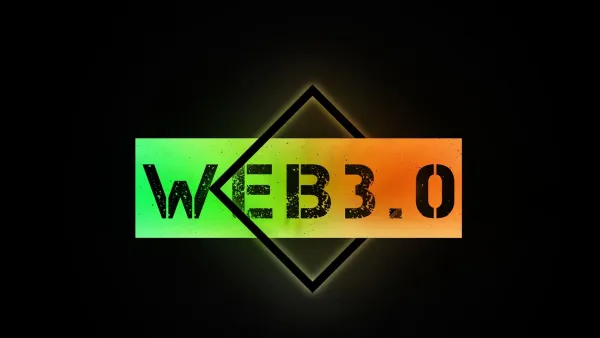With the introduction of Web3, a new age of technical innovation has begun, promising decentralized, user-centric apps built on blockchain technology. This transformation has enormous potential to change industries, empower users, and promote accessibility.
Blockchain, the distributed, decentralized system that assists in the verification of crypto transactions and keeps track of NFT ownership, demands a huge amount of computational power and electricity.
However, as we get started on this digital transformation path, it is critical to consider the environmental consequences of Web3 technologies and make certain that innovation corresponds with sustainability.
Impact Of Web3 On The Environment
Climate change is the most significant problem of our time, threatening the lives of billions of people and animals in the next decades. According to numerous sources, the consequences of climate change, such as draughts, floods, extreme weather events, and increasing sea levels, have already touched 85% of the world's population to different degrees.
The huge amount of energy required to maintain and secure blockchain networks consumes vast amounts of electricity. Mining operations need a significant amount of computing power considering the process of verifying transactions consumes a significant amount of energy.
This is especially true for blockchain networks based on proof-of-work (PoW), such as Bitcoin, where miners compete to solve complicated mathematical problems to validate transactions and earn rewards. Another possible environmental danger associated with Web3 is the usage of cryptocurrencies and other digital assets, which might increase demand for mining equipment and other technology with possible negative environmental impacts.
Mining equipment manufacturing consumes a significant amount of energy, and discarding used equipment can contaminate the environment. This shows a key sustainability concern linked with the end-to-end operation of Web3. Furthermore, as a result of the usage of blockchain technology and smart contracts, supply chains and logistics may involve more transportation and shipping, thereby increasing the emission of greenhouse gases and other pollutants.
This has resulted in more conscious investors seeking more sustainable solutions, such as the surge in demand for "greener" cryptocurrencies, which is a result of rising pressure on Bitcoin miners worldwide to utilize more renewable energy.
Evaluating The Carbon Footprint Of Web3
To take meaningful climate action, organizations must identify and measure their environmental and social consequences. Carbon footprint analysis allows organizations to measure their greenhouse gas emissions, allowing them to identify hotspots and implement focused emission-reduction plans.
Beyond carbon footprint measurement, ESG reporting provides an in-depth evaluation of a company's performance in terms of environmental, social, and governance factors. This data is essential to investors, consumers, and other stakeholders who want to make educated judgments about a company's sustainability and ethical policies.
Importance Of Sustainability
Web3, which promises an internet revolution through decentralization and user empowerment, has enormous potential for creating a fairer and more transparent online environment. Sustainability is important for the following reasons
1. Energy Efficiency
One of the most serious issues about blockchain technology is its energy usage. Proof-of-Work (PoW) protocols, which are used by popular blockchains such as Bitcoin and Ethereum, need a significant amount of processing power. To reduce environmental effects as Web3 advances, more energy-efficient protocols, such as Proof-of-Stake (PoS) or enhanced PoW algorithms, must be developed and implemented.
2. Scalability
Scalability becomes increasingly important as Web3 grows in popularity. The existing limits of blockchain networks, such as Ethereum, in terms of transaction throughput and latency, could be addressed to facilitate wider adoption. To attain more scalability, Web3 should focus on enhancing network efficiency and studying sidechains, or sharding strategies.
3. Assessment of Environmental Impact
To determine their carbon footprint, blockchain projects must undergo extensive environmental impact evaluations. Projects may reduce or lessen their environmental effect by measuring and disclosing the energy usage and emissions related to their activities. Exploring sustainable energy sources for blockchain mining operations can also help with sustainability.
4. Interoperable
Sustainable Web3 development involves the collaboration of several stakeholders. Developers, researchers, governments, and communities must collaborate to set standards, exchange best practices, and promote responsible innovation. Open communication and collaboration may ensure that sustainable ideals are incorporated into Web3.
While Web3 has revolutionary potential, its ultimate potential can only be fulfilled if sustainability is recognized as a basic value. We can construct a Web3 that benefits all by emphasizing sustainability, social fairness, and ethical growth, making a lasting good influence on our society.
Environment-Friendly Alternatives
Recognizing these problems, the crypto community is determined to find environmentally friendly solutions. The following are some of the important initiatives for a more sustainable change
1. Transition From PoW To PoS
Many blockchain projects are abandoning the energy-intensive Proof of Work (PoW) protocol method in favor of Proof of Stake (PoS). To participate in the network's consensus process, validators must retain and "stake" a particular quantity of Bitcoin. This substantially reduces energy usage.
2. New Eco-Friendly Blockchain
New blockchain initiatives with a major focus on energy efficiency are developing. These blockchains are intended to consume as little energy as possible while ensuring security and decentralization.
3. Carbon Offsetting
Some cryptocurrency initiatives are actively working to reduce carbon emissions. To offset the carbon footprint associated with their activities, they engage in programs that decrease or collect greenhouse gas emissions.
4. Mining Powered By Solar Energy
Renewable energy sources such as solar and wind are increasingly being used to power mining operations. This transition to renewable energy reduces mining's environmental effect.
These are just a few of the potential alternative ways that are developing in Web3. The Web3 community can guarantee that decentralization and a successful digital future go hand in hand with the well-being of the planet by embracing innovation, cooperation, and a dedication to sustainability.
Sustainability Of Web3 In The Future
The sustainability movement is far larger than just blockchain technology. It has the potential to have an impact on a variety of industries, including supply chain management, renewable energy, and carbon trading.
Supply chain solutions based on blockchain can improve transparency and traceability, making it simpler to verify sustainable and ethical sourcing processes. Blockchain technology can be used in renewable energy projects to facilitate transparent energy trade and distribution. Through blockchain, carbon offset markets can become more efficient and accessible, allowing people and organizations to engage in carbon offsetting activities.
Conclusion
Web3 has the potential to transform several industries by enabling new levels of innovation, trust, and diversity. To realize Web3's full potential and ensure a sustainable future, we have to develop it with environmental and social responsibility in mind. We can establish a Web3 ecosystem that is both innovative and ecologically aware by addressing energy consumption, scalability, ecosystem collaboration, and diversity.










